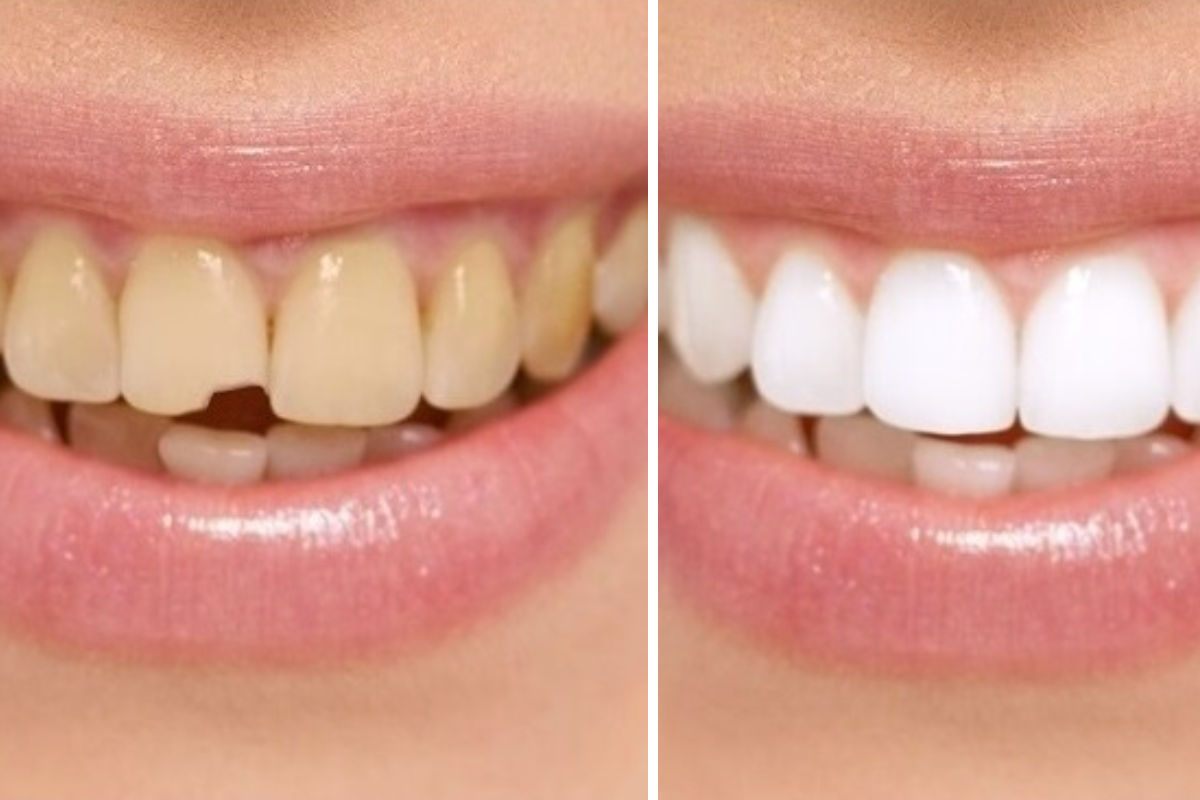
Dental bonding is a popular and effective cosmetic dental procedure that can address various dental issues while enhancing your smile. If you’re looking for a quick and cost-effective way to improve your oral health and aesthetics, dental bonding might be the perfect solution for you.
In this blog, we’ll explore five common dental issues that dental bonding can effectively fix, providing insights into the procedure, its benefits, and what to expect.
What’s a Dental Bonding?
Dental bonding is a cosmetic procedure that involves applying a tooth-colored resin to your teeth to repair and improve their appearance. This resin is molded and shaped to match the surrounding teeth, making it virtually undetectable.
Dental bonding can be used to address several aesthetic concerns and minor dental issues, making it a versatile option for those looking to enhance their smiles.
1. Chipped Teeth
The Issue
Chipped teeth can occur due to various reasons, including trauma, grinding (bruxism), or biting hard objects. A chipped tooth can be unsightly and may even lead to sensitivity or discomfort if the inner layers of the tooth are exposed.
How Dental Bonding Helps
Dental bonding is an excellent solution for repairing chipped teeth. During the procedure, the dentist will:
- Clean the affected area.
- Apply a composite resin that matches the natural color of your tooth.
- Shape and polish the resin to seamlessly blend with your tooth.
Benefits
- Quick Procedure: Bonding can usually be completed in a single visit.
- Natural Appearance: The composite resin can be customized to match your existing teeth.
2. Gaps Between Teeth
The Issue
Gaps between teeth, known as diastema, can be caused by various factors, including genetics, thumb-sucking, or periodontal disease. While some people embrace their gaps, others may find them bothersome and seek ways to close them.
How Dental Bonding Helps
Dental bonding can effectively close gaps between teeth, offering a straightforward solution without the need for braces. The dentist will:
- Apply a tooth-colored resin to the sides of the teeth adjacent to the gap.
- Shape the resin to create the appearance of a full, continuous smile.
Benefits
- Immediate Results: Gaps can be closed quickly, transforming your smile in just one appointment.
- Minimal Invasiveness: Bonding requires little to no alteration of the natural teeth.
3. Stained or Discolored Teeth
The Issue
Stained or discolored teeth can result from various factors, including aging, smoking, or consuming certain foods and beverages (like coffee and red wine). While professional whitening treatments can help, they may not always be effective for all types of discoloration.
How Dental Bonding Helps
For teeth that are resistant to whitening treatments, dental bonding can be a great alternative. The dentist will:
- Select a resin shade that closely matches your natural tooth color.
- Apply the resin to cover the stained areas, restoring a bright and uniform appearance.
Benefits
- Improved Aesthetics: Bonding can effectively mask unsightly stains and improve your smile’s overall appearance.
- Long-lasting Results: With proper care, bonded teeth can maintain their appearance for several years.
4. Misshapen Teeth
The Issue
Some individuals may have teeth that are irregularly shaped or uneven. This can lead to an unbalanced smile and may affect self-esteem.
How Dental Bonding Helps
Dental bonding can reshape and contour misshapen teeth, giving them a more natural and aesthetically pleasing appearance. The process includes:
- Adding resin to specific areas to build up the tooth’s shape.
- Sculpting the resin to achieve the desired contour and symmetry.
Benefits
- Customizable: Bonding allows for personalized adjustments to achieve the perfect shape.
- Immediate Transformation: Results are visible right after the procedure, without the need for multiple visits.
5. Exposed Tooth Roots
The Issue
Gum recession can expose the roots of teeth, leading to sensitivity, discomfort, and an increased risk of decay. This issue often occurs due to periodontal disease, aggressive brushing, or other factors.
How Dental Bonding Helps
Dental bonding can be used to cover exposed tooth roots, protecting them from further damage and sensitivity. The dentist will:
- Apply a composite resin over the exposed root surface.
- Shape and polish it to blend with the surrounding tooth structure.
Benefits
- Reduced Sensitivity: Covering exposed roots can significantly decrease sensitivity to temperature changes.
- Aesthetic Improvement: Bonding restores the appearance of the tooth, making it look complete.
The Dental Bonding Procedure: What To Expect In The Process?
If you’re considering dental bonding, here’s what you can expect during the procedure:
- Consultation: Your dentist will evaluate your teeth and discuss your goals for treatment. The dentist may take X-rays to assess the underlying dental health.
- Preparation: The dentist will clean the affected tooth and may apply a local anesthetic if necessary.
- Resin Application: The dentist will apply the composite resin, shape it as needed, and use a special light to harden the material.
- Finishing Touches: After the resin has hardened, the dentist will polish it to match the sheen of your natural teeth.
- Follow-Up: You don’t need any special care after bonding, but you must maintain good oral hygiene for longevity.
Aftercare Tips for Dental Bonding
To ensure the longevity of your dental bonding, consider the following aftercare tips:
- Maintain Good Oral Hygiene: Brush and floss regularly to keep your teeth and gums healthy.
- Avoid Staining Foods: Limit consumption of foods and drinks that can stain teeth, such as coffee, tea, and red wine.
- Wear a Mouthguard: If you grind your teeth at night, consider using a mouthguard to protect your bonding.
- Regular Dental Check-ups: Schedule routine dental visits to monitor the condition of your bonded teeth.
A Versatile Solution for Your Dental Needs
Dental bonding is an effective and versatile cosmetic procedure that can address a variety of dental issues, from chipped and stained teeth to gaps and misshapen teeth. It offers a quick, cost-effective solution that can significantly enhance your smile and boost your confidence.
If you’re struggling with any of the dental issues mentioned above, consult with your dentist to see if dental bonding is the right choice for you. With its numerous benefits and relatively simple procedure, dental bonding can pave the way for a healthier, more beautiful smile.
Investing in your oral health is not just about aesthetics; it’s about improving your overall well-being and quality of life.




